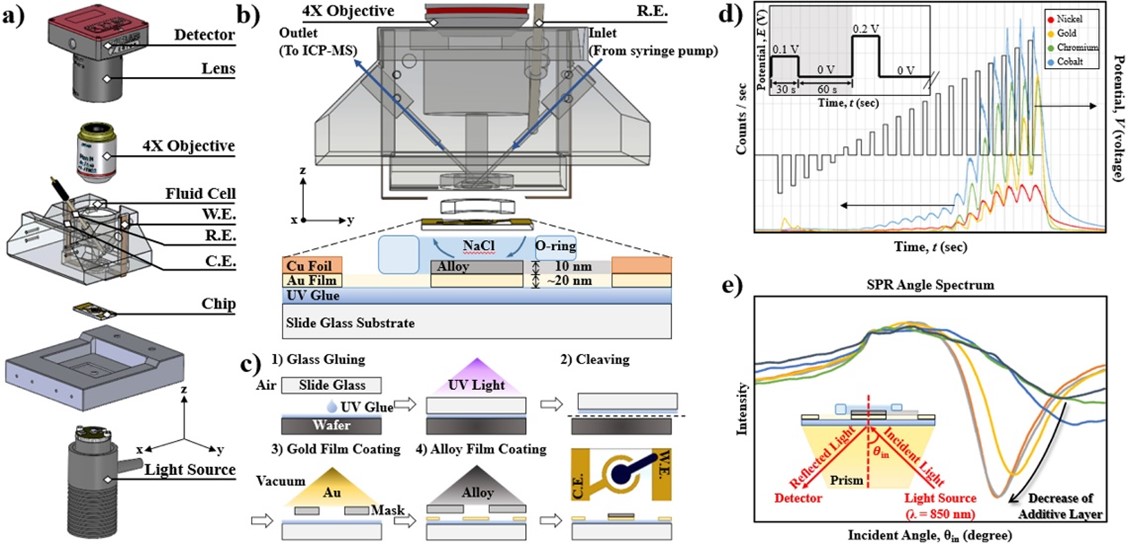- The full article entitled “Corrosion of plasma sputtering medium entropy alloy thin film: A multidisciplinary perspective” can be found at the Corrosion Science website https://doi.org/10.1016/j.corsci.2023.111020
- Authors: Kai-Chi Chuang a, Yu-Yen Chang a, Ching-Yu Chiang c, Yun-Chung Liu d, Hao-Hsuan Hung d, Ko-Kai Tseng b, Jien-Wei Yeh b*, Hsiu-Wei Cheng a*
Plasma sputtering multi-principal element alloys (MPEAs) thin film is critical to functional multi-layer material design for a wide range of applications. To investigate its electrochemical stability, we established a multidisciplinary approach including in-situ optical microscope integrated EC-SPR coupled with ICPMS, and ex-situ XPS and XAS analysis. Compared to our previous work in bulk material, we observed a significant reactivity change of plasma sputtering thin film on gold. Based on XPS, XAS and SPR results, we propose that the formation of Cr(OH)3 at the edge and the interface between alloys and gold layers is responsible for weakening the corrosion resistance of an NiCoCr/Au system.

Fig. 1. Schematic of home-built real-time corrosion analysis setup. (a) Optical train, EC-flow cell and sample arrangement. (b) Enlarged view of flow profile and electrode arrangement within EC-flow cell. (c) Procedure of thin film sample chip manufacturing. (d) Time-resolved Mass Spectrum overview with application of normal pulse voltammetry, where the inset graph shows the pulse profile within the given periods. (e) Measured angle-resolved SPR spectrum with illustration of SPR geometry.